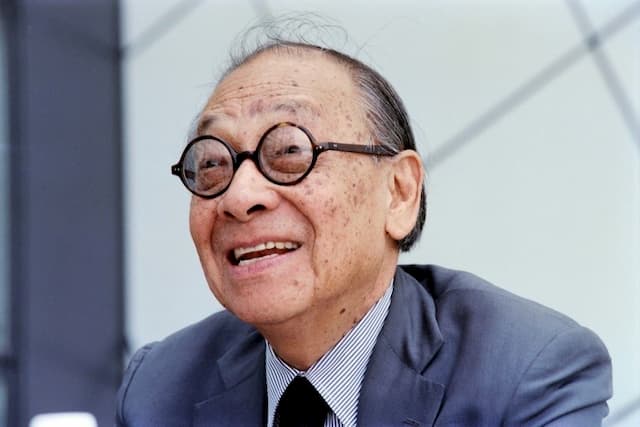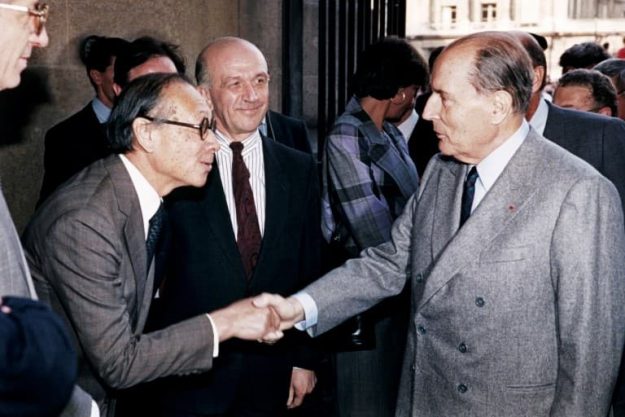He is Credited with the Louvre Pyramid: The Architect Leoh Ming Pei, Died at 102

The famous Sino-American architect, Leoh Ming Pei, died in New York on Thursday 16th May, 2019. He designed many landmark buildings, from the Louvre Pyramid to the Bank of China in Hong Kong.
Architect Chinese-American Ieo Ming Pei, who designed many notable buildings from the Louvre Pyramid to the Bank of China in Hong Kong, died at 102 years old, it was confirmed on Thursday to the architectural firm Pei Partnership Architects in New York by his sons.
The cabinet said that the famous architect had died in New York, without further details. The New York Times, citing his son Chien Chung Pei, said he died early Thursday morning.
Some idea of modernity
Winner of the Pritzker Prize in 1983, considered the Nobel Prize of architecture, Ieoh Ming Pei imposed a certain idea of modernity and classicism in bold projects such as the redevelopment of the great Parisian museum.
“Contemporary architects tend to impose modernity on things. There is a bit of concern for the story, but it is not very deep, “he said in an interview with the New York Times in 2008.
“I understand that things have changed, that we have evolved. But I do not want to forget the beginning (…) An architecture that lasts must have roots.
Born April 26, 1917 in Canton, in an old family from Suzhou, “the Venice of the East”, near Shanghai, Ieoh Ming Pei left in the United States in 1935 where he graduated from MIT (Massachusetts Institute of Technology). ), then a design degree at Harvard University (1948) where he was a pupil of Walter Gropius, founder of the Bauhaus and one of the theoreticians of the international style.

Increasing success
A naturalised American in 1954, he was successively assistant professor at Harvard (1945-1948), then director of architecture at Webb and Knapp (1948-1955), before creating his own agency (IM Pei et associés) in 1955.
The construction of the Mile High Center in Denver, Colorado, (1956) is the first major commission of a long series: National Centre for Atmospheric Research at Boulder, Colorado (1967), John Hancock Tower, Boston (1973).
During the seventies, his firm enjoyed growing success in the United States and around the world: Dallas City Hall, Texas, (1978), JF Kennedy Library, Boston (1982), Xiangshan Hotel, Beijing, (1983), Convention and Exhibition Center, New York, (1985), National Gallery of Art, Washington, Bank of China, Hong Kong (1989).
Honoured by two presidents
In 1983, President François Mitterrand appealed to this architect, then relatively unknown in France, to rethink the Grand Louvre. His bold project, which will unleash violent passions, will finally see the day in 1988.
The architect also left his mark in Berlin by building an annex to the German Historical Museum – inaugurated in 2003 – and in Doha (Qatar) where he designed the Museum of Islamic Art.
Ieoh Ming Pei has been awarded the most prestigious awards. In addition to the Pritzker, he received the Gold Medal from the American Institute of Architecture (1979), and the Great Gold Medal from the French Academy of Architecture (1981).
Two presidents honoured him: George HW Bush presented him with the Presidential Medal of Liberty (1992), the highest civilian honour, and François Mitterrand the insignia of Officer of the Legion of Honour (1993).

Enjoyed this? Get the week’s top France stories
One email every Sunday. Unsubscribe anytime.


